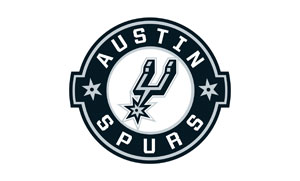Everyone loves to smack a wiffle ball. It isn't as easy it looks, though. You can throw crazy curves and amazing sinkers. And if you swing too hard you'll put the "whiff" back in "wiffle".
Game Rules
Court
The size of the playing field is optional, but we recommend a minimum dimensions of 20 feet in width at the home run markers (approx. 8 paces) by 60 feet long (approx. 23 paces) from home plate to each home run marker.
Equipment
WIFFLE® bat, or substitute an ordinary broom handle. WIFFLE® perforated plastic bat.
The WIFFLE ball was designed for use in congested areas. Because the ball will not travel far even when solidly hit, ball chasing and base running have been eliminated. The field is laid out with foul lines and markers for singles, doubles, triples, and home run areas.
The minimum number of players required to play a game with the Wiffle Ball is two -- the pitcher and batter -- one player per side. The maximum number of players that can compete is ten -- five players to a side.
If a full team is playing, each side will consist of a catcher, pitcher, double area fielder, triple area fielder and home run area fielder. Fielders cannot move from one area to another when a full team is playing. When more than two players are playing, captains for each side are picked and they choose their respective teams alternately.
As in baseball, the game is played with one team at bat and one team in the field. The batting order of the team at bat is: Pitcher, Catcher, Double Area player, Triple Area player and, finally, Home Run Area player.
The rules of play are similar to baseball, however there is no base running. Three outs to retire a side, per inning, nine innings per game. In case of a tie, additional innings are played. For a complete inning, both sides must bat.
An out for the batter can be made in three ways:
- The batter can strike out only if he/she swings at a pitched ball and does not foul tip the third strike. Foul tips count as strikes for the first two strikes only. A foul tip caught in back of the batters box does not count as an out.
- Fly balls caught in fair or foul territory.
- Ground balls caught while the ball is in motion, in fair territory. Bunting is not allowed and the batter cannot obtain a base on balls.
Scoring
Single markers are places approximately 24 feet from home plate on the foul line. A ball hit in the single area (i,e, the area between batters box and single markers) and not caught, constitutes a single. Double markers are places approximately 20 feet back of the single markers on the foul line. A ball hit in the double area and not caught, constitutes a double. Triple markers are places approximately 20 feet back of the double markers on the foul line. A ball hit in the triple area and not caught, constitutes a triple. A Ball hit past the triple markers and not caught, constitutes a home run.
The Baseball Rules of Scoring Apply
Example: A player hits a single - his/her team has a man on first base (imaginary runners). The next player hits a single - the team now has man on first and second. Third batter hits a home run - three runs scored! (The imaginary runners on first and second, plus the home run)
- A batter earns 1 imaginary base on a single, 2 imaginary bases on a double and 3 imaginary bases on a triple.
- A runner on 1st base advances one base on a single, 2 bases on a double and scores on a triple.
- A runner on 2nd base advances one base on a single and scored on a double and triple.
- A runner on 3rd base scores on any hit.














